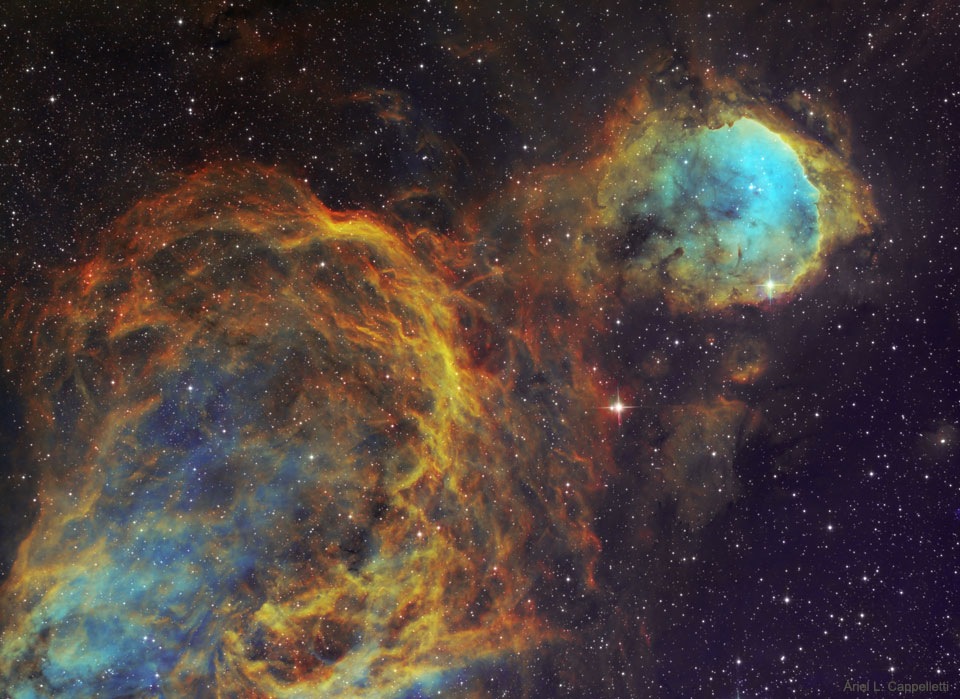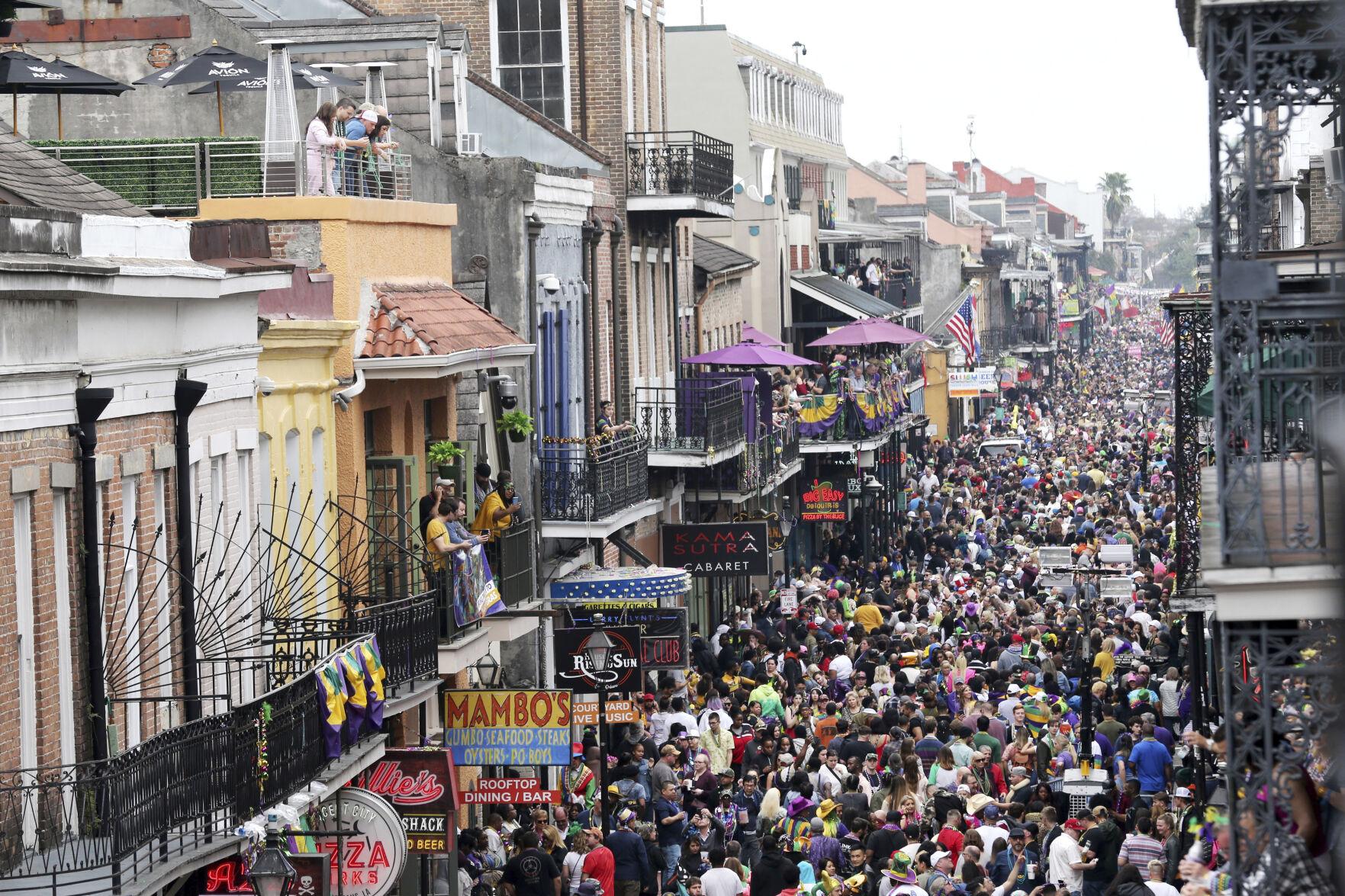Blog
NASA/ESA Hubble Space Telescope Picture of the Week features an impressive portrait of M1-63, a beautifully captured example of a bipolar planetary nebula located in the constellation of Scutum (the Shield). A nebula like this one is formed when the star at its centre sheds huge quantities of material from its outer layers, leaving behind a spectacular cloud of gas and dust. It is believed that a binary system of stars at the centre of the bipolar nebula is capable of creating hourglass or butterfly-like shapes like the one in this image. This is because the material from the shedding star is funnelled towards its poles, with the help of the companion, creating the distinctive double-lobed structure seen in nebulae such as M1-63.

Carole King Klein (born Carol Joan Klein; February 9, 1942) is an American singer-songwriter who has been active since 1958, initially as one of the staff songwriters at the Brill Building and later as a solo artist. She is the most successful female songwriter of the latter half of the 20th century in the US, having written or co-written 118 pop hits on the Billboard Hot 100. King also wrote 61 hits that charted in the UK, making her the most successful female songwriter on the UK singles charts between 1962 and 2005.
King’s major success began in the 1960s when she and her first husband, Gerry Goffin, wrote more than two dozen chart hits, many of which have become standards, for numerous artists. She has continued writing for other artists since then. King’s success as a performer in her own right did not come until the 1970s, when she sang her own songs, accompanying herself on the piano, in a series of albums and concerts. After experiencing commercial disappointment with her debut album Writer, King scored her breakthrough with the album Tapestry, which topped the U.S. album chart for 15 weeks in 1971 and remained on the charts for more than six years.
King has made 25 solo albums, the most successful being Tapestry, which held the record for most weeks at No. 1 by a female artist for more than 20 years. Her record sales were estimated at more than 75 million copies worldwide. She has won four Grammy Awards and was inducted into the Songwriters Hall of Fame and the Rock and Roll Hall of Fame for her songwriting. She is the recipient of the 2013 Library of Congress Gershwin Prize for Popular Song, the first woman to be so honored. She is also a 2015 Kennedy Center Honoree.
more...
Ernest Dale Tubb (February 9, 1914 – September 6, 1984), nicknamed the Texas Troubadour, was an American singer and songwriter and one of the pioneers of country music. His biggest career hit song, “Walking the Floor Over You” (1941), marked the rise of the honky tonk style of music.
In 1948, he was the first singer to record a hit version of Billy Hayes and Jay W. Johnson’s “Blue Christmas“, a song more commonly associated with Elvis Presley and his late-1950s version. Another well-known Tubb hit was “Waltz Across Texas” (1965) (written by his nephew Quanah Talmadge Tubb, known professionally as Billy Talmadge), which became one of his most requested songs and is often used in dance halls throughout Texasduring waltz lessons. Tubb recorded duets with the then up-and-coming Loretta Lynn in the early 1960s, including their hit “Sweet Thang”. Tubb is a member of the Country Music Hall of Fame.
The youngest of five children, Tubb was born on a cotton farm near Crisp, in Ellis County, Texas. His father was a sharecropper, so Tubb spent his youth working on farms throughout the state.
https://www.youtube.com/watch?v=VygpgG7gFdA
more...Carmen Miranda GCIH OMC (Portuguese pronunciation: [ˈkaɾmẽȷ̃ miˈɾɐ̃dɐ]; born Maria do Carmo Miranda da Cunha; 9 February 1909 – 5 August 1955) was a Portuguese-born Brazilian samba singer, dancer, Broadway actress, and film star who was active from the 1930s on. Nicknamed “The Brazilian Bombshell”, Miranda is known for her signature fruit hat outfit she wore in her American films. As a young woman, she designed hats in a boutique before making her first recordings with composer Josué de Barros in 1929. Miranda’s 1930 recording of “Taí (Pra Você Gostar de Mim)”, written by Joubert de Carvalho, catapulted her to stardom in Brazil as the foremost interpreter of samba.
During the 1930s, Miranda performed on Brazilian radio and appeared in five Brazilian chanchadas, films celebrating Brazilian music, dance, and the country’s carnival culture. Hello, Hello Brazil! and Hello, Hello, Carnival! embodied the spirit of these early Miranda films. The 1939 musical Banana da Terra (directed by Ruy Costa) gave the world her “Baiana” image, inspired by African-Brazilians from the northeastern state of Bahia.
In 1939, Broadway producer Lee Shubert offered Miranda an eight-week contract to perform in The Streets of Paris after seeing her at Cassino da Urca in Rio de Janeiro. The following year she made her first Hollywood film, Down Argentine Way with Don Ameche and Betty Grable, and her exotic clothing and Lusophone accent became her trademark. That year, she was voted the third-most-popular personality in the United States; she and her group, Bando da Lua, were invited to sing and dance for President Franklin D. Roosevelt. In 1943, Miranda starred in Busby Berkeley‘s The Gang’s All Here, which featured musical numbers with the fruit hats that became her trademark. By 1945, she was the highest-paid woman in the United States.
more...Walter Sylvester Page (February 9, 1900 – December 20, 1957) was an American jazz multi-instrumentalist and bandleader, best known for his groundbreaking work as a double bass player with Walter Page’s Blue Devils and the Count Basie Orchestra.
Page was born in Gallatin, Missouri on February 9, 1900 to parents Edward and Blanche Page. Page showed a love for music even as a child, perhaps due in part to the influence of his aunt Lillie, a music teacher. Page’s mother, with whom he moved to Kansas City in 1910, exposed him to folksongs and spirituals, a critical foundation for developing his love of music.
more...mick performing Rastaman Chant and So Much Trouble in the World Nyabinghi Style
more...Edward Ray Sharpe (born February 8, 1938) is an American R&B and rockabilly singer, guitarist, and songwriter. Many of his recordings, including his best-known, “Linda Lu”, are sometimes classed as rockabilly – he was described by one record producer as “the greatest white-sounding black dude ever”
more...
With interstellar gas as a canvas, a massive and tumultuous Wolf-Rayet star has created the picturesque ruffled half-circular filaments called WR32, on the image left. Additionally, the winds and radiation from a small cluster of stars, NGC 3324, have sculpted a 35 light year cavity on the upper right, with its right side appearing as a recognizable face in profile. This region’s popular name is the Gabriela Mistral Nebula for the famous Chilean poet. Together, these interstellar clouds lie about 8,000 light-years away in the Great Carina Nebula, a complex stellar neighborhood harboring numerous clouds of gas and dust rich with imagination inspiring shapes. The featured telescopic view captures these nebulae’s characteristic emission from ionized sulfur, hydrogen, and oxygen atoms mapped to the red, green, and blue hues of the popular Hubble Palette.

John Towner Williams (born February 8, 1932) is an American composer, conductor, pianist and trombonist. Regarded by many as one of the greatest film composers of all time, he has composed some of the most popular, recognizable, and critically acclaimed film scores in cinematic history in a career that has spanned over six decades. Williams has won 25 Grammy Awards, seven British Academy Film Awards, five Academy Awards, and four Golden Globe Awards. With 52 Academy Award nominations, he is the second most-nominated individual, after Walt Disney. In 2005, the American Film Institute selected Williams’s score to 1977’s Star Wars as the greatest film score of all time. The Library of Congress also entered the Star Wars soundtrack into the National Recording Registry for being “culturally, historically, or aesthetically significant”.
Williams has composed for many critically acclaimed and popular movies, including the Star Wars saga, Jaws, Close Encounters of the Third Kind, Superman, E.T. the Extra-Terrestrial, Home Alone, the Indiana Jones films, the first two Jurassic Park films, Schindler’s List, and the first three Harry Potter films. Williams has also composed numerous classical concertos and other works for orchestral ensembles and solo instruments. He served as the Boston Pops‘ principal conductor from 1980 to 1993 and is its laureate conductor. He has been associated with director Steven Spielberg since 1974, composing music for all but five of his feature films. Other works by Williams include theme music for the 1984 Summer OlympicGames, NBC Sunday Night Football, “The Mission” theme used by NBC News and Seven News in Australia, the television series Lost in Space and Land of the Giants, and the incidental music for the first season of Gilligan’s Island. Williams was inducted into the Hollywood Bowl‘s Hall of Fame in 2000, and received a Kennedy Center Honor in 2004 and the AFI Life Achievement Award in 2016. He has composed the score for eight of the top 25 highest-grossing films at the U.S. box office (adjusted for inflation). His work has influenced other film composers and contemporary classical and popular music. Marcus Paus argues that Williams’ “satisfying way of embodying dissonance and avant-garde techniques within a larger tonal framework” makes him “one of the great composers of any century.”
more...Fatma Ahmed Kamal Shaker (Arabic: فاطمة أحمد كمال شاكر), better known by her stage name Shadia (Arabic: شادية, Shādiyya; 8 February 1931 – 28 November 2017), was an Egyptian actress and singer. She was famous for her roles in light comedies and drama in the 1950s and 1960s. She is one of the iconic actresses and singers in Egypt and the middle east region and a symbol of the golden age of Egyptian cinema and is known of her many patriotic songs. Her movies and songs are popular in Egypt and all the Arab World. Critics consider her the most successful comprehensive Egyptian and Arabic artist of all time. Her first appearance in a film was in “Azhar wa Ashwak” (Flowers and Thorns), and her last film was “La Tas’alni Man Ana” (Don’t Ask Me Who I Am). She is also known for her patriotic song “Ya Habibti Ya Masr” (Oh Egypt, My Love) and her breakthrough leading role in the Egyptian movie “Al Maraa Al Maghoula” (The Unknown Woman). Six of her movies are listed in the top 100 Egyptian movies of the 20th century. In April 2015, she became the first actress to be awarded an honorary doctorate by the Egyptian Academy of Arts. She was given the nickname “Idol of the Masses” following her successful movie “Maaboudat El Gamaheer” (Idol of the Masses). Other notable nicknames include “The Guitar of the Arabic Singing” (Egyptian Arabic: قيثارة الغناء العربى) and “The Golden Guitar” (Egyptian Arabic: القيثارة الذهبية).
more...Eddie Locke (August 2, 1930 – September 7, 2009) was an American jazz drummer.
Eddie Locke was a part of the fertile and vibrant Detroit jazz scene during the 1940s and 1950s, which brought forth many great musicians including the Jones brothers (Hank, Thad, and Elvin), Kenny Burrell, Lucky Thompson, Tommy Flanagan, Barry Harris, and so many others. He eventually formed a variety act with drummer Oliver Jackson called Bop & Locke which played the Apollo Theater. He moved to New York City in 1954, and worked there with Dick Wellstood, Tony Parenti, Red Allen, Willie “The Lion” Smith, and Teddy Wilson amongst others. During this time he came under the tutelage of the great Jo Jones, and eventually became known as a driving and swinging drummer who kept solid time and supported the soloist. During the late 1950s he formed two of his most fruitful musical relationships, one with Roy Eldridge, and the other with Coleman Hawkins. His recording debut came with Eldridge in 1959 on “On The Town”. He later became a member of the Coleman Hawkins Quartet in the 1960s along with pianist Tommy Flanagan and bassist Major Holley. That group made many fine records including the exquisite album “Today and Now”, in 1963. Throughout the 1970s, he played with Roy Eldridge at Jimmy Ryan’s in Manhattan, and wound out his career freelancing, as well as teaching youngsters at the Trevor Day School on Manhattan’s upper west side.
Eddie died on Monday morning, September 7, 2009, in Ramsey, New Jersey.
more...Alonzo “Lonnie” Johnson (February 8, 1899 – June 16, 1970) was an American blues and jazz singer, guitarist, violinist and songwriter. He was a pioneer of jazz guitar and jazz violin and is recognized as the first to play an electrically amplified violin.
Johnson was born in New Orleans, Louisiana, and raised in a family of musicians. He studied violin, piano and guitar as a child and learned to play various other instruments, including the mandolin, but he concentrated on the guitar throughout his professional career. “There was music all around us,” he recalled, “and in my family you’d better play something, even if you just banged on a tin can.
more...Mardi Gras and the weekend leading up to it will look quite different in New Orleans this year amid the lingering coronavirus pandemic.
Mayor LaToya Cantrell announced new restrictions starting next Friday, Feb. 12, and lasting through the Mardi Gras holiday on Feb. 16 as part of a citywide plan to crack down on crowds to prevent the spread of COVID-19.
The biggest new restriction? The closing of all bars in the city. Also included were guidelines on where people can and cannot gather during the time the rules are in effect.
All New Orleans bars closed for Mardi Gras, access restricted to major streets under new rules
- CITYWIDE: All bars will be closed for indoor and outdoor service; the sale of to-go drinks is not allowed.
- FRENCH QUARTER: The sale of packaged liquor will be prohibited.
- BOURBON STREET*: Bourbon Street will be closed at night from 7 p.m.-3 a.m. to both vehicles and pedestrians. Loitering is not allowed.
- FRENCHMEN STREET*: Frenchmen Street will be closed at night from 7 p.m.-3 a.m. to both vehicles and pedestrians. Loitering is not allowed.
- DECATUR STREET*: Decatur Street will be closed at night from 7 p.m.-3 a.m. to both vehicles and pedestrian with no loitering allowed.
- CLAIBORNE CORRIDOR: The Claiborne Underpass will be fenced off from St. Louis Street to St. Bernard Avenue and loitering is not allowed. Large gatherings are banned including things that encourage people to congregate, like street performances.
- OTHER: NOPD Superintendent Shaun Ferguson said there will be an increased police presence at the above locations, along with Magazine Street and St. Charles Avenue.

Written by Earl King
more...This cluster, known as M53 and cataloged as NGC 5024, is one of about 250 globular clusters that survive in our Galaxy. Most of the stars in M53 are older and redder than our Sun, but some enigmatic stars appear to be bluer and younger. These young stars might contradict the hypothesis that all the stars in M53 formed at nearly the same time. These unusual stars are known as blue stragglers and are unusually common in M53. After much debate, blue stragglers are now thought to be stars rejuvenated by fresh matter falling in from a binary star companion. By analyzing pictures of globular clusters like the featured image taken by the Hubble Space Telescope, astronomers use the abundance of stars like blue stragglers to help determine the age of the globular cluster and hence a limit on the age of the universe. M53, visible with a binoculars towards the constellation of Bernice’s Hair (Coma Berenices), contains over 250,000 stars and is one of the furthest globulars from the center of our Galaxy.

Milton “Milt” Holland (born Milton Olshansky; February 7, 1917 – November 4, 2005) was an American drummer, percussionist, ethnomusicologist, and writer in the Los Angeles music scene. He pioneered the use of African, South American, and Indian percussion styles in jazz, pop and film music, traveling extensively in those regions to collect instruments and learn styles of playing them.
Holland was born Milton Olshansky in Chicago, Illinois, where he attended Theodore Roosevelt High School. His first instrument was the violin. He pursued a passion for percussion, playing in clubs and shows and on CBS Radio in Chicago. By the age of twelve, he was playing at speakeasies for the likes of Al Capone. In the early 1940s, Holland toured and recorded with The Raymond Scott Orchestra. He studied tabla at UCLA and with Ramnad Easwaran. In India, Holland studied with tabla master Chatur Lal beginning in 1963. He traveled through India extensively in the early 1960s and 1970s, then spent many years in Africa studying tribal rhythms. He was among the first to introduce the instruments to western recording.
After moving to Los Angeles in 1946, he played on countless jazz and pop albums, film and TV scores. A sampling of the artists he worked with includes Frank Sinatra, Bing Crosby, the Beatles, the Rolling Stones, Chaka Khan, John Williams, Leonard Bernstein, Elmer Bernstein, Quincy Jones, Nat King Cole, Henry Mancini, Loggins and Messina, James Taylor, Ella Fitzgerald, Laurindo Almeida, Ry Cooder, Bonnie Raitt, Seals and Crofts, Ray Manzarek, Michael Dinner, Gordon Lightfoot, Ringo Starr, Kenny Loggins, Jim Messina, Poco, Captain Beefheart, David Blue, Rita Coolidge, Carly Simon, Cal Tjader, the Doobie Brothers, Little Feat, Maria Muldaur, Randy Newman, and Joni Mitchell. He played pandeiro, congas and triangle on Mitchell’s hit Big Yellow Taxi and congas and percussion on Light My Fire with José Feliciano.
more...
More Posts
- Daily Roots with Israel Vibration
- The Cosmos with NGC 1187
- Reggie Workman Day
- Big Bill Broonzy Day
- World Music with Very Be Careful
- Daily Roots with Uwe Banton
- The Cosmos with M20
- Joe Chambers Day
- Clifton Chenier Day
- Johnny Smith Day
- World Music with Haig Yazdjian
- Daily Roots with Peter Tosh
- Your Community Band 6-24-18 2pm
- The Cosmos with NGC 7098
- Jeff Beck Day
- Lester Williams Day
- Terry Riley Day
- World Music with George Abdo
- Daily Roots with Damian Marley and Nas
- Geoffrey Oryema Ugandan musician Passes